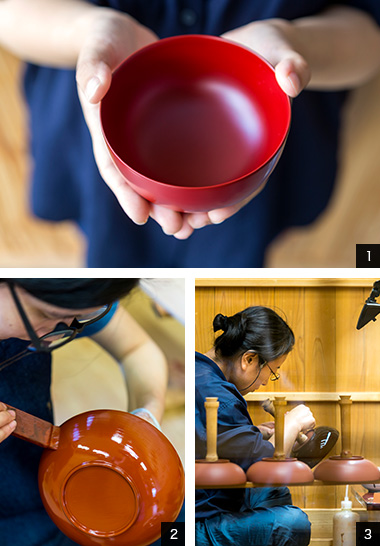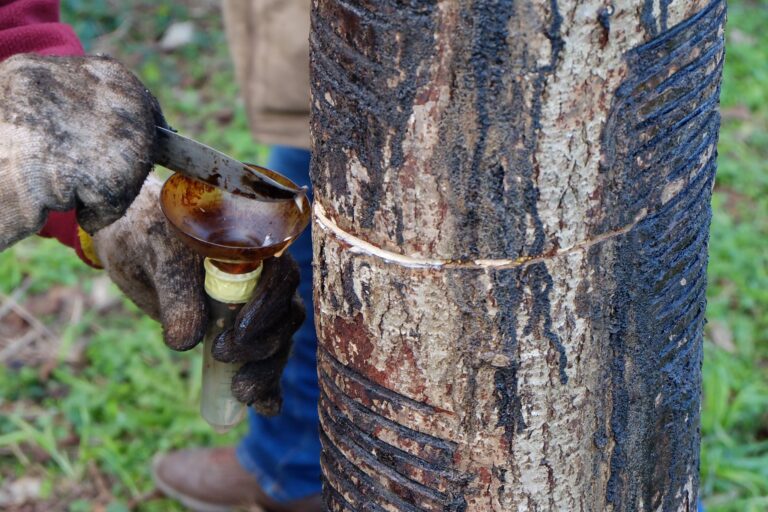The Lacquerware of the Appi River Basin
Vivid reds, deep lush blacks, and graceful forms characterize Appi-nuri, the lacquerware of the Appi River basin in Hachimantai, Iwate Prefecture. In the past, beech was the common material of woodturners who lived here, but today horse chestnut, zelkova, and cherry birch are more often used. To bowls and other vessels made of these all-natural, domestically grown woods, Appi-nuri artisans painstakingly apply layer upon layer of raw lacquer, thoroughly polishing down each coat once it hardens and before the next is added. The precious raw lacquer, the sap of the urushi tree, comes from northern Iwate, one of the few domestic centers where it is still harvested.
A 1,300 Years Tradition
It is believed that the lacquerware craft of this region was begun by monks around the time the Tendaiji temple was founded nearly 1,300 years ago in Joboji, north of the Appi highlands. The soup and rice bowls they made for use in the temple caught on among villagers, and the craft spread south to settlements along the Appi River as woodturners sought better supplies of wood. Written records exist only from the Edo period (1603–1867), but by then a small colony of lacquer artisans lived near the river around Kamasuda, upstream from where urushi trees were tapped for their sap.


High Quality Lacker

The high-quality lacquer harvested in this area has a shimmering transparency that brings out the best of the base colors. Multiple coats yield the distinctive plush look and durability of Appi-nuri lacquerware, and also its thermal benefits, keeping chilled foods chilled and cooked foods hot.
From start to finish, some 52 steps—preparing and blending pigments, coating a piece, drying it in a special chamber, polishing, repeat, repeat, etc.—are involved in crafting a single lacquered item. Bold colors and simple, timeless designs make Appi-nuri lacquerware well suited to contemporary tables, and with proper care each piece will remain beautiful for generations to come.

